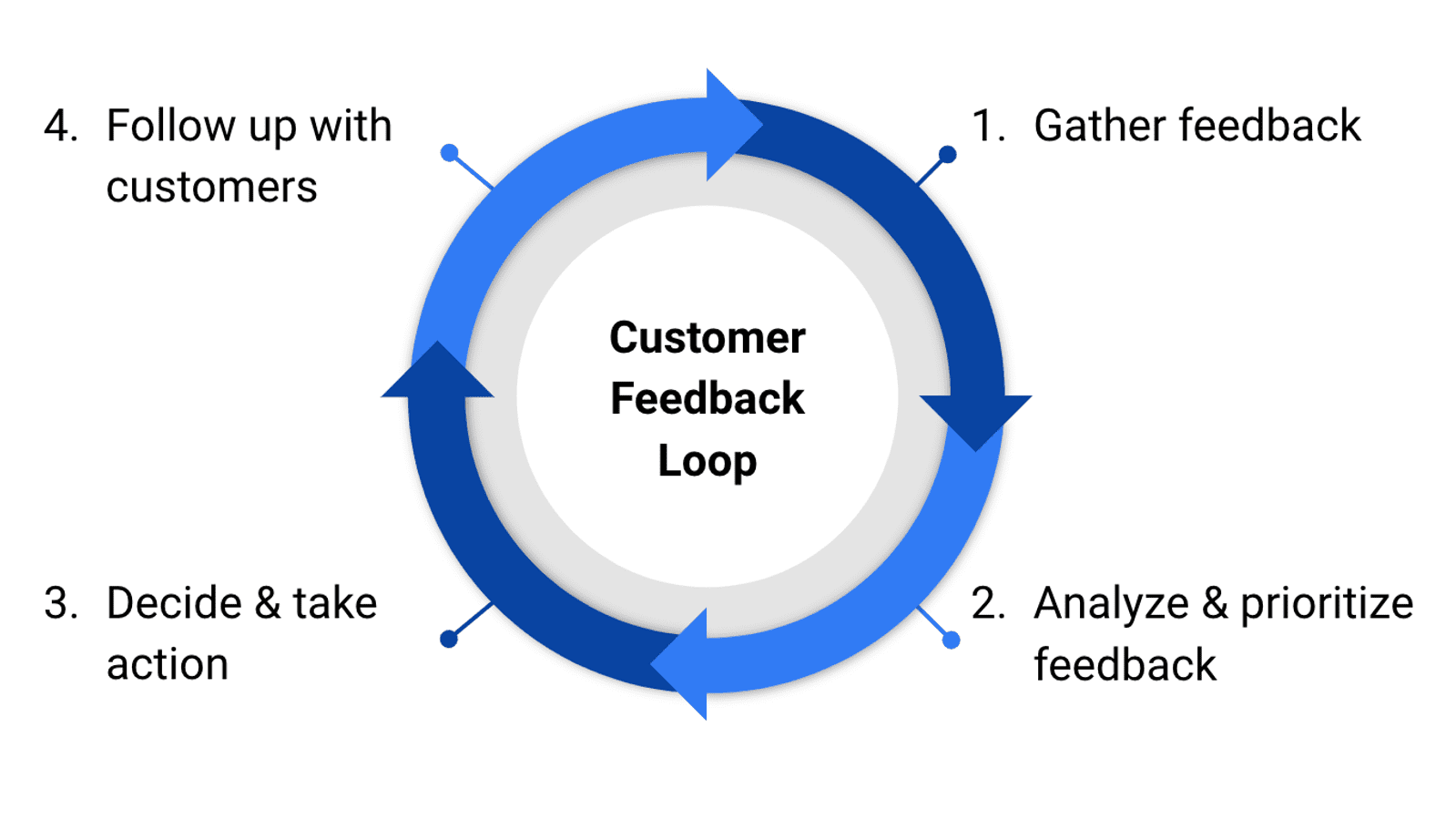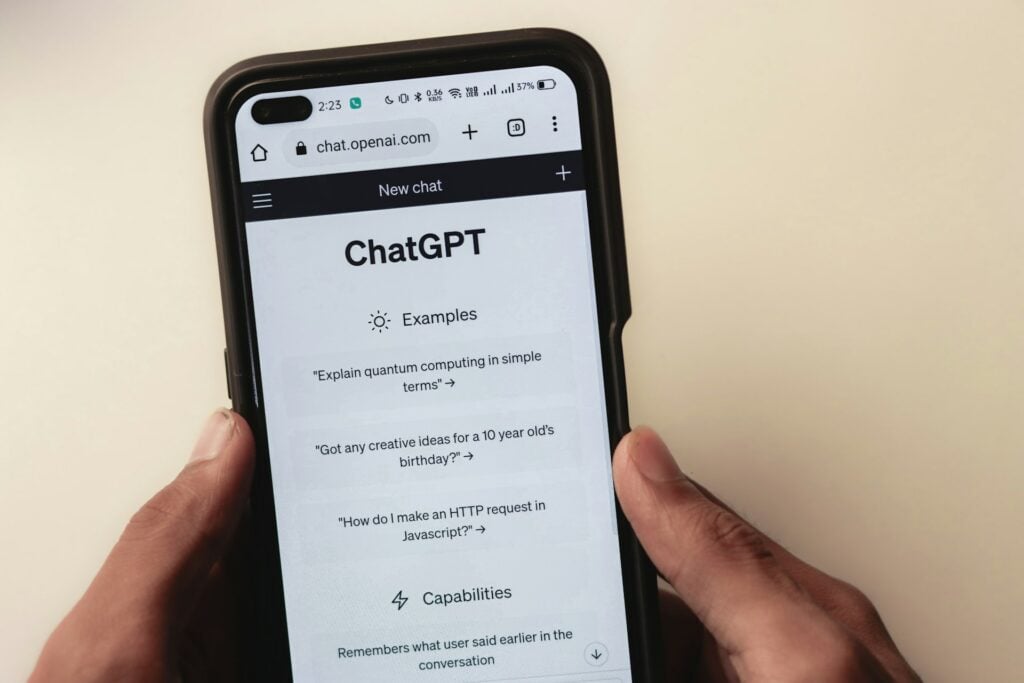Understanding how to give and use feedback effectively is key to any sales team’s success. Feedback loops, the process of giving, getting, and acting on feedback, are crucial for improving communication, strategies, and results. This is as much for customer interaction as it is for dealing with internal issues but a study by McKinsey found that when businesses increase their efforts on customer interaction there’s an improvement in employee engagement of 20%. This shows that honing one feedback loop can absolutely help the other.
One way closing the internal feedback loop is now easier than ever is video calls, or more specifically, video call recordings. A straightforward way to review conversations, meetings, and sales pitches. It’s not about making tech another part of an already busy and overwhelmed process but about harnessing these tools to sharpen communication, clear up confusion, and absolutely smash it out of the park when it comes to building stronger connections… or just make yourself sound smart.
@tldv.io What is feedback? #corporatehumor #feedback #9to5 IB: @sanjeev.nc (on IG)
♬ original sound - tldv.io - AI Meeting Recorder
Feedback Loops ❤️ Video Call Recordings
The Importance of the Feedback Loop in Communication
Feedback plays a pivotal role in any form of communication. It’s the bridge that connects the sender and the receiver, ensuring that the message is not just delivered but also understood and acted upon. In sales and leadership, feedback isn’t just about giving direction; it’s about fostering an environment where continuous improvement is part of the culture.
With the shift to digital environments, the mechanisms of feedback have evolved. Traditional face-to-face interactions provided immediate non-verbal cues that indicated understanding or confusion. In contrast, digital platforms often strip away these nuances, making it harder to gauge the receiver’s reaction accurately. This is where video call recordings can make a huge difference.
By recording digital interactions, leaders and sales teams can revisit these conversations with a critical eye. It allows for a unique opportunity to observe not just what was said but how it was received. This can lead to valuable insights into how communication can be improved, whether it’s tweaking a sales pitch based on the client’s reactions or enhancing internal communication strategies based on team feedback.
Moreover, video call recordings serve as a concrete basis for feedback. Instead of relying on memory or notes, teams can refer directly to what was discussed, ensuring that feedback is specific, relevant, and actionable. This specificity can significantly enhance the quality of feedback, making it a powerful tool for growth and improvement.

The Role of Video Call Recordings in Feedback
It may be almost painfully obvious what the benefits of video call recordings in feedback are. You can literally watch the video back and give feedback. Simple. But actually, it’s a lot more nuanced than this. Beyond the straightforward advantage of replaying conversations, video call recordings offer a depth of insight into communication dynamics that is unparalleled.
First, these recordings allow us to observe not just what was said but how it was communicated. The tone of voice, body language, and even the pace of speech can significantly impact how messages are received. In sales, for example, the enthusiasm and confidence conveyed in a pitch can be as crucial as the pitch itself. Video recordings provide a window into these subtleties, enabling teams to refine their approach with granular precision.
Moreover, video call recordings offer a type of feedback that is deeply rooted in reality. Rather than relying on memory or subjective interpretations, teams have access to a concrete record of their interactions. This objectivity makes it easier to identify areas for improvement and celebrate successes with undeniable evidence. It’s one thing to tell a team member they handled a client’s objection well; it’s another to show them exactly how they navigated the conversation effectively.
Additionally, the use of video call recordings promotes continuous learning. By regularly reviewing and analyzing these recordings, teams can build a culture of self-improvement and accountability. It turns every call into a learning opportunity, where both strengths and weaknesses are highlighted for development.
Finally, in an era where remote work is increasingly common, video call recordings help bridge the gap created by physical distance. They ensure that the nuances of communication are not lost in translation, providing a richer, more connected feedback experience.
Integrating Video Call Recordings into Training and Development
All this is great and all, but one of the biggest benefits of video call recording in sales is the ability to use it for training. You can use real-life customers, real-life interactions, and real-life scenarios, which provide an unparalleled learning experience. Here’s how to tap into this goldmine of insights for training programs and continuous improvement.
Build a Real-Life Scenario Library
Start by creating a collection of video call recordings that showcase a range of situations — from successful sales pitches to challenging customer objections. This repository of customer insight becomes a vital resource for both new hires and seasoned salespeople, offering them a chance to learn from actual interactions.
Facilitate Interactive Review Sessions
Organize regular meetings where your team can watch and analyze these recordings together. This not only helps in identifying what strategies work but also promotes a culture of learning from real-world examples. Discussing these sessions as a team can spark new ideas and encourage a shared understanding of best practices.
Role-Play Based on Actual Conversations
Extract specific segments from your recordings for role-play exercises. This method immerses your team in realistic scenarios, allowing them to practice and refine their approach in a safe environment. Such direct application of real-life examples enhances the learning impact significantly.
Personalize Development Goals
Incorporate insights from these recordings into individual development plans. By setting targeted improvement goals based on actual performance, salespeople can focus on refining specific skills. Tracking progress becomes easier and more meaningful when you have concrete examples to reference.
Enhance Coaching Sessions with Direct Examples
Use the recordings in one-on-one coaching to offer precise, actionable feedback. Highlighting specific moments from real calls can guide salespeople to understand and adopt more effective communication and sales techniques.
Whether you decide to do one or all of these actions, by incorporating real-life examples into your training strategy, you not only boost the relevance and engagement of your training programs but also empower your sales team to excel in real-world interactions.
Analyzing video call recordings is a critical step in leveraging them for training and development. However, without a structured approach, it’s easy to get lost in the hours of footage. Here are some techniques and tools that can help turn these recordings into actionable feedback.
Segmentation and Tagging
Begin by breaking down recordings into manageable segments. Use tagging to categorize these segments by themes, such as objection handling, product explanations, or closing techniques. This makes it easier to find and focus on specific areas of interest during analysis.
Checklists and Scorecards
Develop a checklist or scorecard based on your sales process and communication standards. Use these as a framework to evaluate the recordings. Criteria might include clarity of communication, effectiveness of response to questions or objections, and overall engagement level. This structured approach ensures consistency in feedback.
Peer Review Sessions
Organize peer review sessions where team members can watch and critique each other’s calls, guided by a set of predefined questions or criteria. This fosters a collaborative learning environment and offers multiple perspectives on the same interaction.
Focus on Non-Verbal Cues
Pay special attention to non-verbal cues, such as body language and facial expressions. These can provide significant insights into customer engagement and reaction, which are critical for refining sales techniques.
Action Plans and Follow-ups
The ultimate goal of analyzing recordings is to generate actionable feedback. After identifying areas for improvement, create specific action plans for salespeople to work on. Schedule follow-up sessions to review progress and ensure that feedback is being effectively applied.
Trying these out can transform video call recordings from being a passive archive of old call recordings into an active tool that provides opportunities for improvement. Being able to analyze recordings with a clear, structured approach allows teams, and sales management, to extract valuable lessons and apply them to enhance their sales strategies and communication skills.
Navigating the Bumps: Overcoming Challenges with Video Call Recordings
While introducing video call recordings into your sales team’s routine can seem like a no-brainer it’s not without its hurdles. Let’s break down a few common roadblocks you might face and how to smoothly get past them.
Challenge 1: Resistance from a member of your Team
What’s the issue? Some team members might feel uneasy being recorded or skeptical about the benefits of this approach.
Quick Fix: Start with the “why.” Clearly explain the purpose behind the recordings and how they’ll help the team grow. Share success stories or data showing improvements from other teams. Consider starting with voluntary participants to showcase positive outcomes that encourage others to get on board. Also, it may be apt to lay it out directly. There has always been some sort of recording or documentation in sales and video call recording is no different.
Challenge 2: Finding the Time
What’s the issue? Reviewing recordings can be time-consuming, and finding extra hours in a packed sales schedule might seem impossible.
Quick Fix: Efficiency is key. Instead of watching full recordings, focus on key moments flagged for review. Use the clipping tool which allows for easy tagging and segmenting of important parts. Schedule regular, but brief, review sessions to integrate this practice without overwhelming the team.
Challenge 3: Overload of Information
What’s the issue? The sheer volume of recordings can quickly become overwhelming, making it challenging to identify actionable insights without getting lost in the details.
Quick Fix: Prioritize and categorize. Not all recordings need in-depth analysis. Prioritize those that involve significant deals, customer feedback, or learning opportunities. Categorize recordings by themes or skills, such as negotiation tactics or product knowledge, to streamline the review process. This can be done automatically using the AI in tl;dv, or by using the smart search and tagging.
Challenge 4: Analyzing Effectively
What’s the issue? Knowing what to look for in recordings can be daunting, and without focus, the analysis might not yield useful feedback.
Quick Fix: Develop a simple checklist or framework based on your sales process and objectives. Train your team on what good looks like and how to spot areas for improvement or success. This can make analysis more structured and productive.
Challenge 5: Ensuring Positive Impact
What’s the issue? Implementing a new tool or strategy doesn’t guarantee positive results on its own.
Quick Fix: Foster a culture of openness and continuous learning. Encourage the team to view recordings as opportunities for growth, not criticism. Regularly review the impact of recordings on performance and adjust your strategy as needed, ensuring it always aligns with your team’s goals and needs.
By addressing these challenges head-on with clear, actionable strategies, you’ll not only make it a lot easier to integrate video call recordings into your feedback loop and training processes but also unlock their full potential to boost your team’s performance.
Close That Loop!
In sales, it’s plain to see that effective feedback mechanisms are really key to making sure you have happy reps and in turn, happy customers. The feedback loop—essential for refining strategies and enhancing communication—becomes even more powerful with the integration of video call recordings. These recordings offer an objective lens through which we can scrutinize and improve our sales interactions.
As we look to the future, the role of video call recordings in sales and feedback is set to expand, driven by advancements in technology. Tools like tl;dv.io are at the forefront of this evolution, offering innovative solutions that streamline the analysis of video calls, thereby enhancing the feedback loop. With such technologies, sales teams can not only optimize their performance but also stay ahead in an increasingly digital marketplace.








